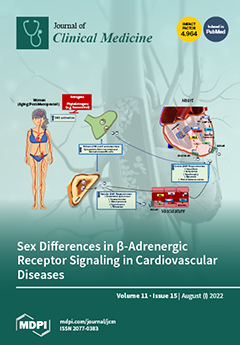Introduction: Cardiogenic shock due to myocardial infarction or heart failure entails a reduction in end organ perfusion. Patients who cannot be stabilized with inotropes and who experience increasing circulatory failure are in need of an extracorporeal mechanical support system. Today, small, percutaneously implantable cardiac assist devices are available and might be a solution to reduce mortality and complications. A temporary, ventricular, continuous flow propeller pump using magnetic levitation (Impella
®) has been approved for that purpose. Methods and Study Design: JenaMACS (Jena Mechanical Assist Circulatory Support) is a monocenter, proof-of-concept study to determine whether treatment with an Impella CP
® leads to improvement of hemodynamic parameters in patients with cardiogenic shock requiring extracorporeal, hemodynamic support. The primary outcomes of JenaMACS are changes in hemodynamic parameters measured by pulmonary artery catheterization and changes in echocardiographic parameters of left and right heart function before and after Impella
® implantation at different support levels after 24 h of support. Secondary outcome measures are hemodynamic and echocardiographic changes over time as well as clinical endpoints such as mortality or time to hemodynamic stabilization. Further, laboratory and clinical safety endpoints including severe bleeding, stroke, neurological outcome, peripheral ischemic complications and occurrence of sepsis will be assessed. JenaMACS addresses essential questions of extracorporeal, mechanical, cardiac support with an Impella CP
® device in patients with cardiogenic shock. Knowledge of the acute and subacute hemodynamic and echocardiographic effects may help to optimize therapy and improve the outcome in those patients. Conclusion: The JenaMACS study will address essential questions of extracorporeal, mechanical, cardiac support with an Impella CP
® assist device in patients with cardiogenic shock. Knowledge of the acute and subacute hemodynamic and echocardiographic effects may help to optimize therapy and may improve outcome in those patients. Ethics and Dissemination: The protocol was approved by the institutional review board and ethics committee of the University Hospital of Jena. Written informed consent will be obtained from all participants of the study. The results of this study will be published in a renowned international medical journal, irrespective of the outcomes of the study. Strengths and Limitations: JenaMACS is an innovative approach to characterize the effect of additional left ventricular mechanical unloading during cardiogenic shock via a minimally invasive cardiac assist system (Impella CP
®) 24 h after onset and will provide valuable data for acute interventional strategies or future prospective trials. However, JenaMACS, due to its proof-of-concept design, is limited by its single center protocol, with a small sample size and without a comparison group.
Full article






